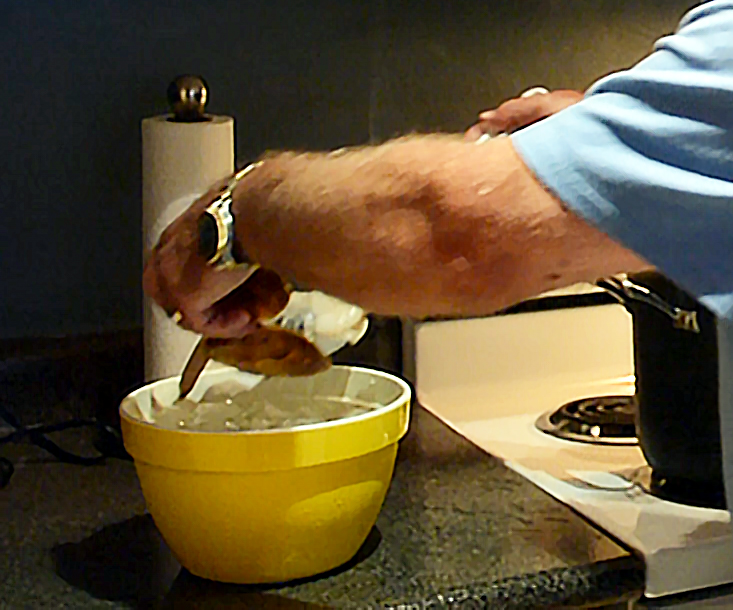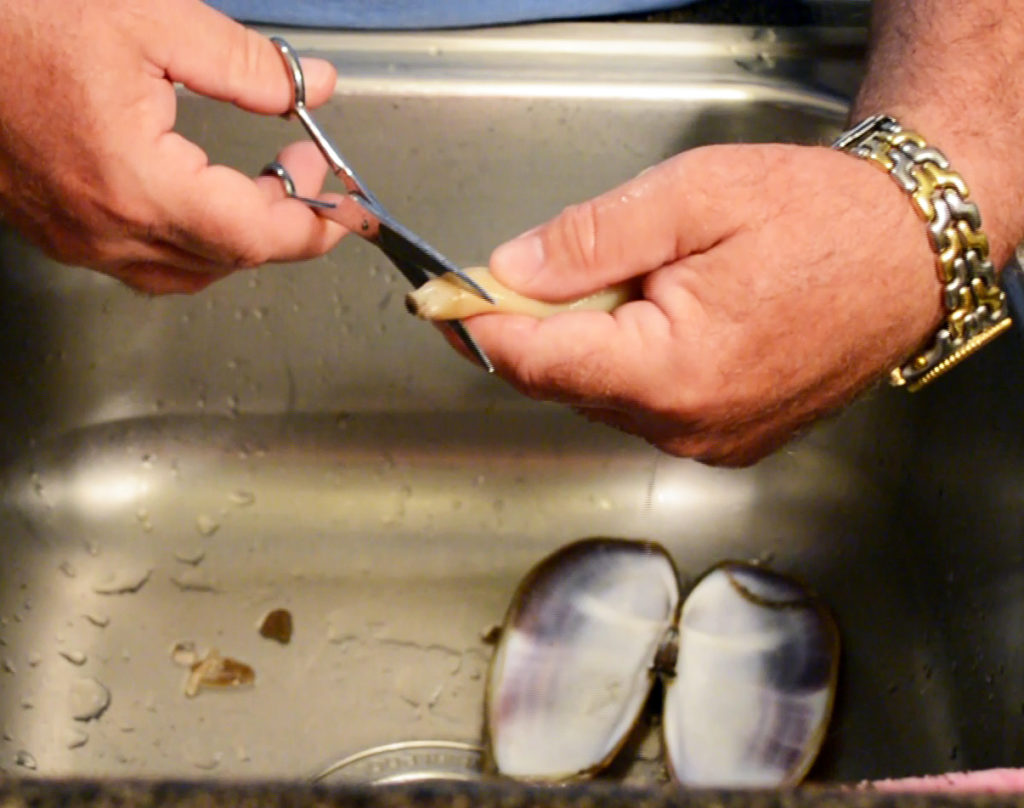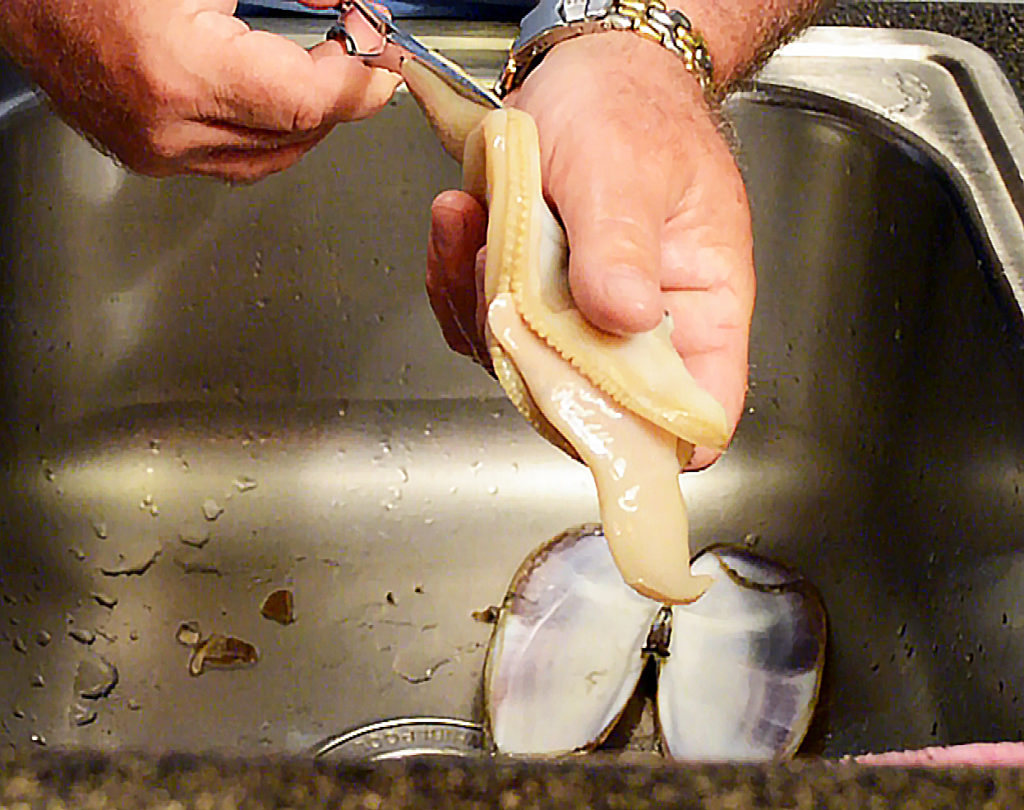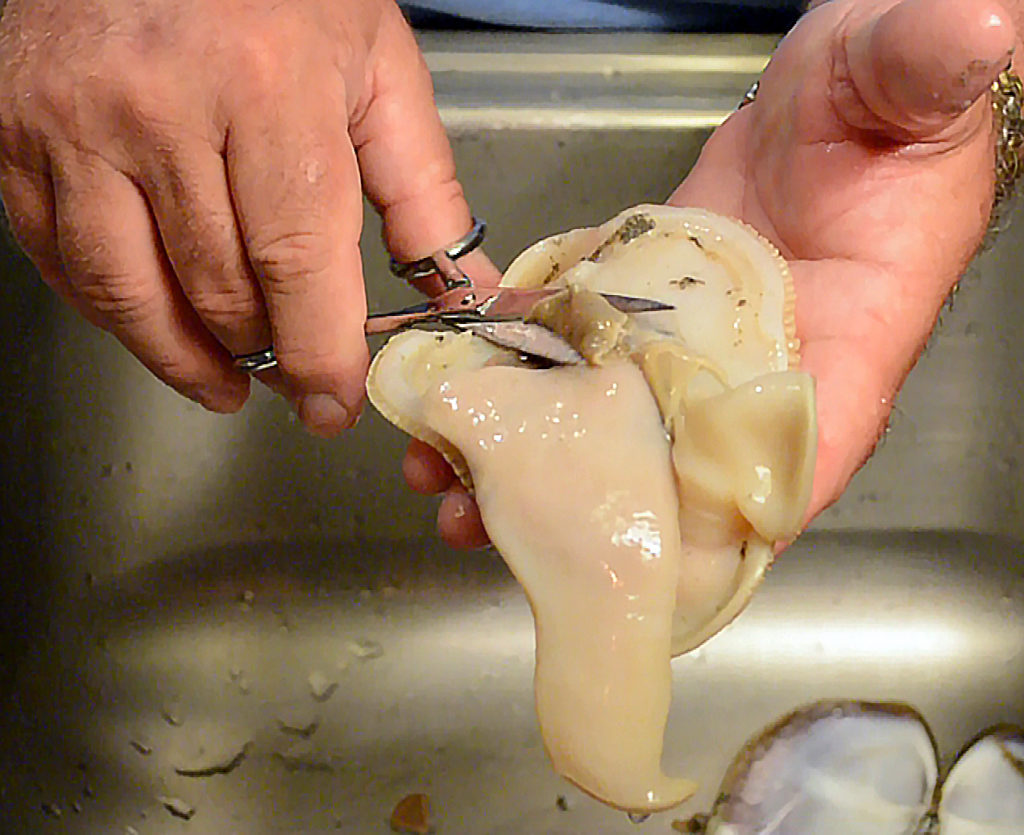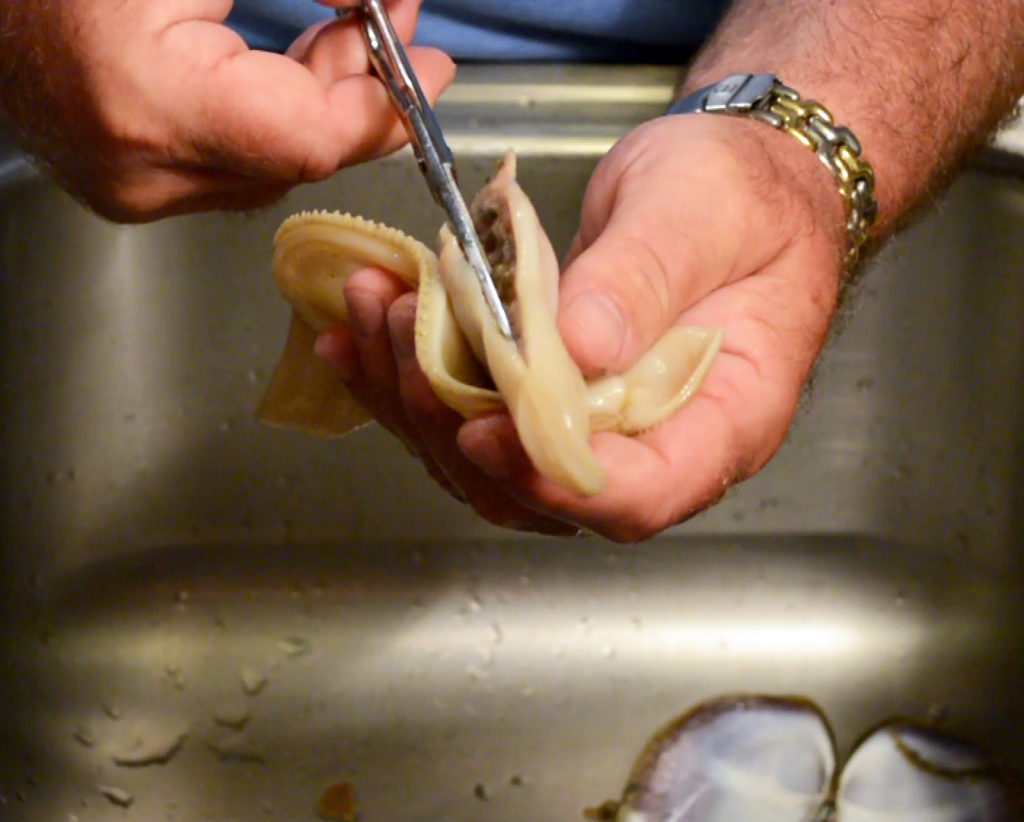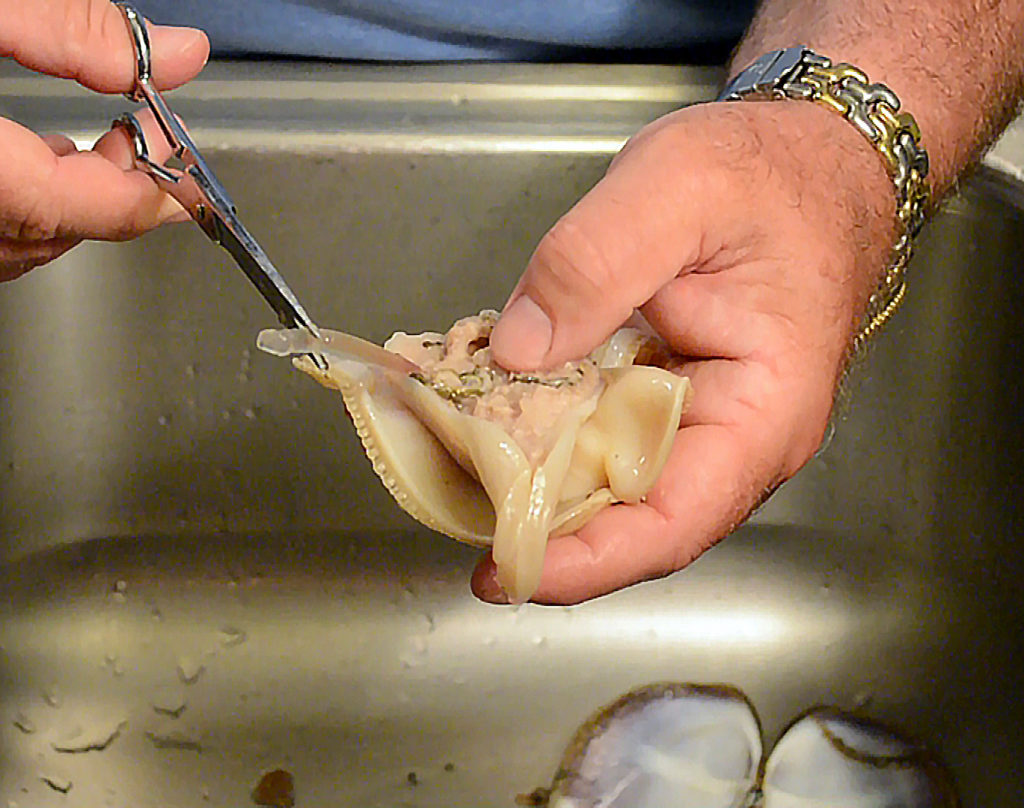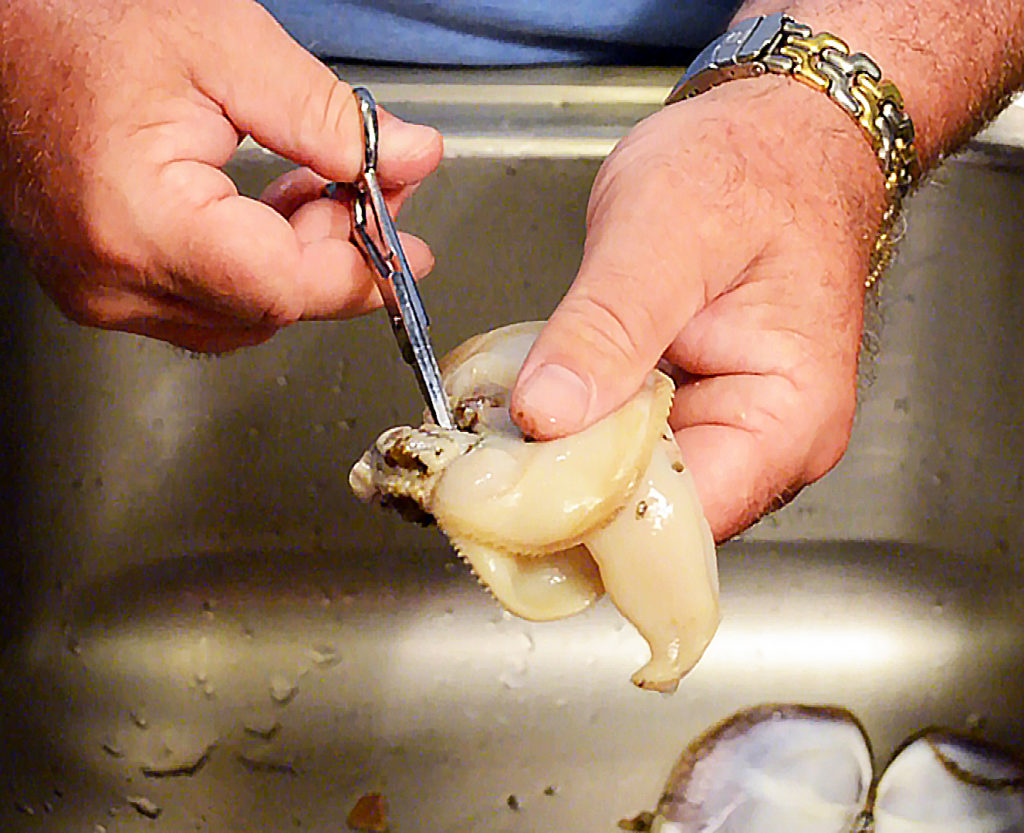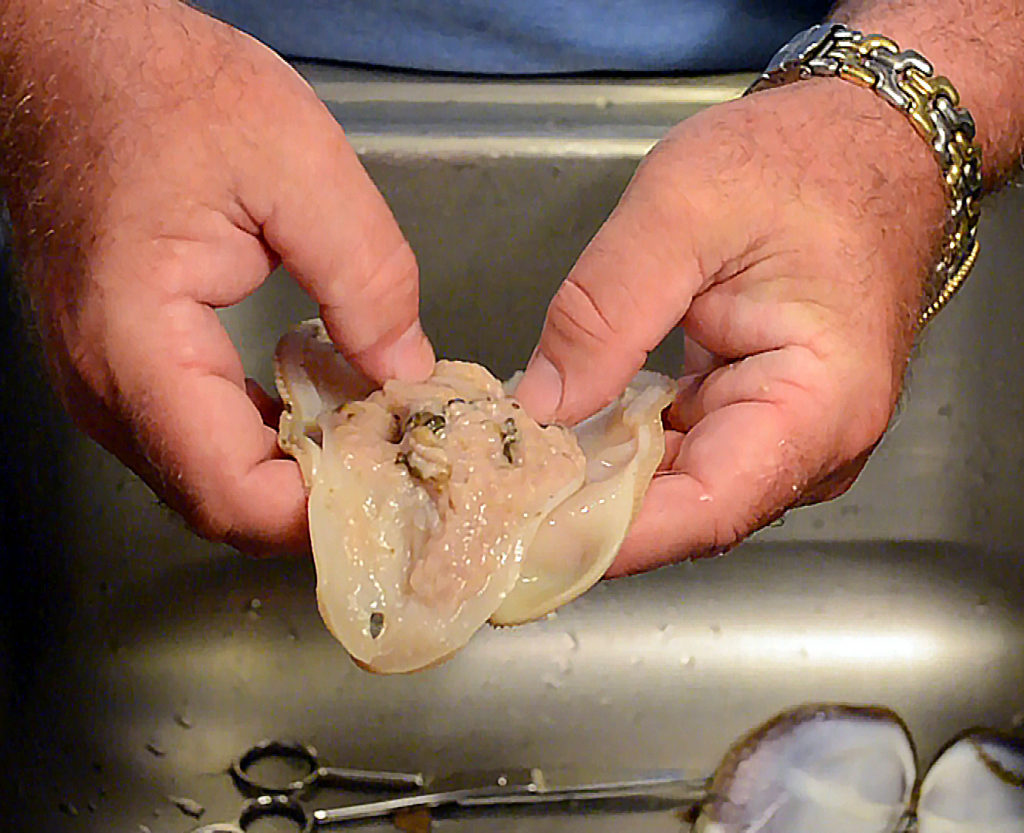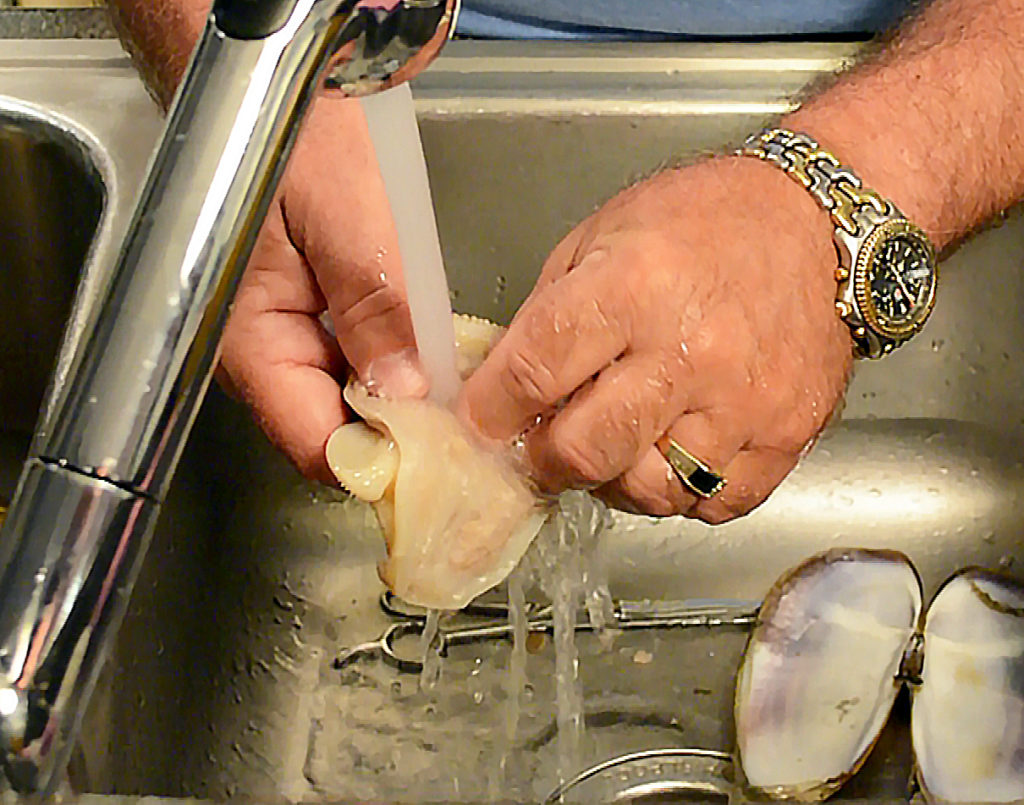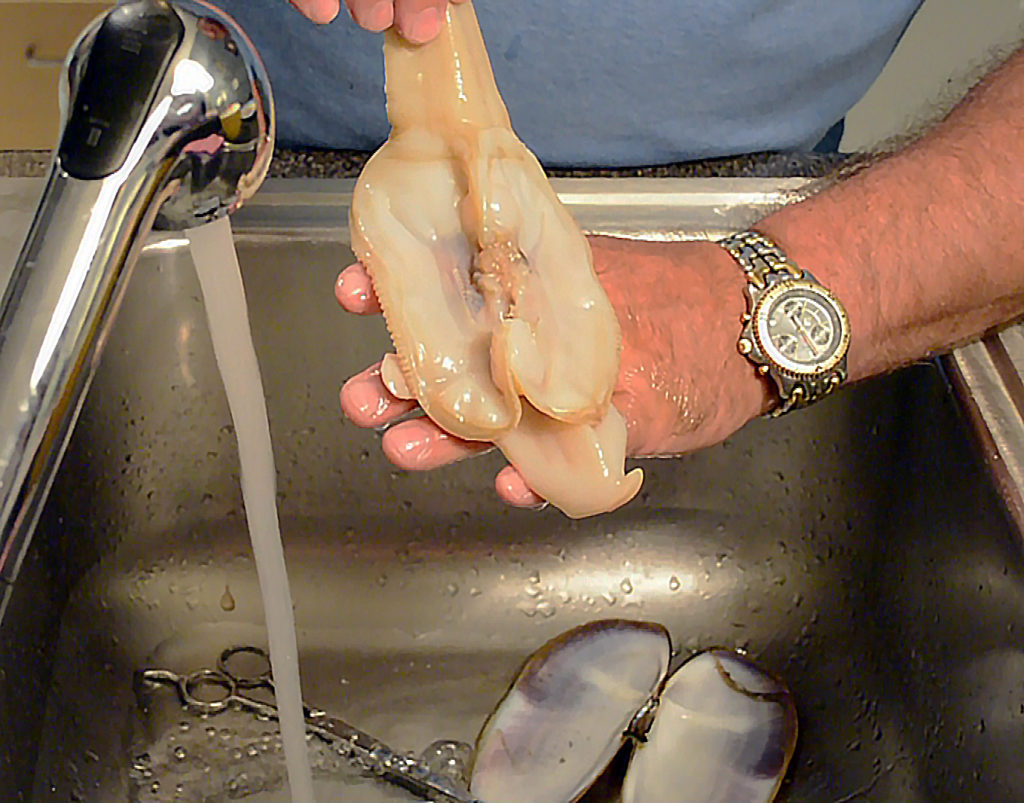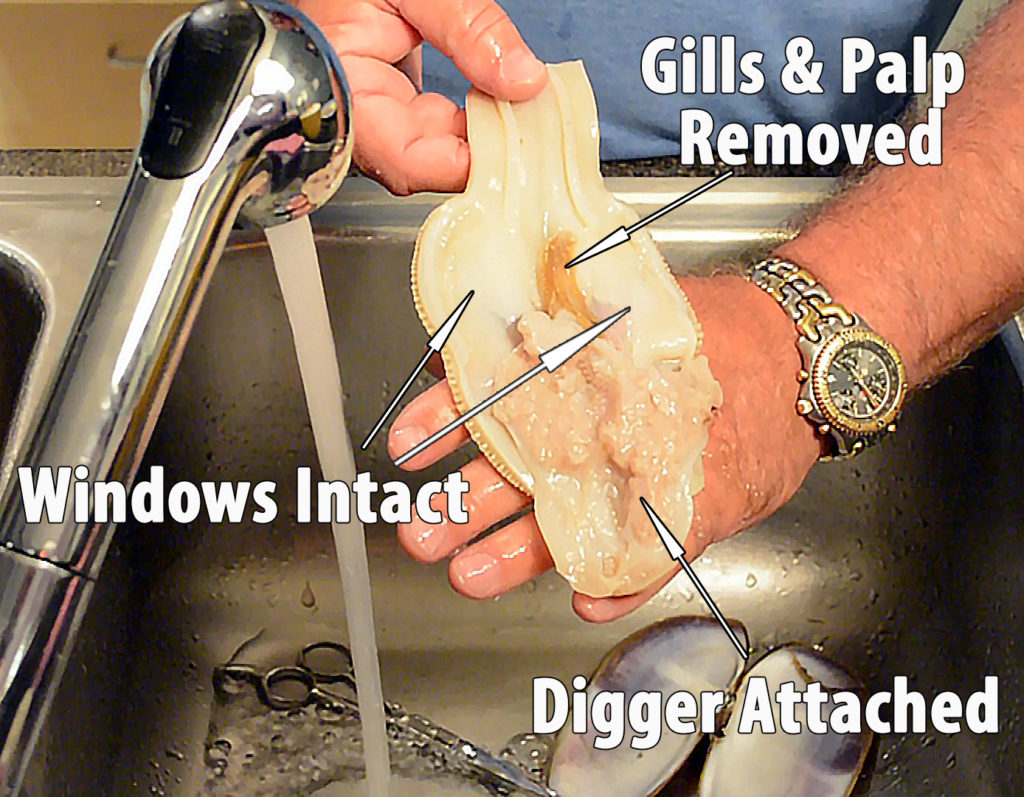I have been Cleaning Razor Clams for fifty years and it is sad to see how much miss information is out on the web, especially YouTube videos. With that said, cleaning razor clams is easy as long as you have photos, or a video as a guide. Reading how to do this is lengthy (gives me a headache), so here you will see photos and a video.
I admit there are a number of different ways to approach cleaning razor clams; however, there is only one end-product goal! Cleaned Razor Clams must be:
- Do not separate the neck and the digger! They are in one piece…
- The windows (side membrane when the clam is cut to lay flat) are intact, and have no holes.
- The gills and palps are removed (some cultures like to leave them, but they should be removed).
- Most all have a “crystalline style” in them. This clear thin rod about an inch long helps digestion, it is edible, but it is removed.
- The intestine that runs through the digger is removed, but the foot membrane is the best part of the clam, do not wash out this membrane.
Finally, some people use a sharp knife, I prefer scissors with very thin blades to easily slip into the razor siphon holes. You can store your clams in the fridge for up to five days, and they freeze really well for up to a year.
Video – Cleaning Razor Clams
Cleaning Razor Clams – A Step By Step Photo Filmstrip
During certain times of the year marine toxins, produced by some species of diatoms (algae) are taken in by shellfish. When ingested, these toxins can cause illness and in exceedingly high concentrations can be fatal to humans. So, for that reason clamming during high biotoxin times is not allowed. The Oregon Department Fish and Wildlife (ODFW) and Washington Department Fish and Wildlife (WDFW) in cooperation with the Departments of Health (DOH) sample clams on a routine basis. If high toxin levels are detected, clam seasons are delayed or closed. ODFW, WDFW and DOH work extremely hard to provide a safe and fun resource to enjoy for all clammers. Therefore, always contact ODFW or WDFW to check on safety relating to shellfish.
